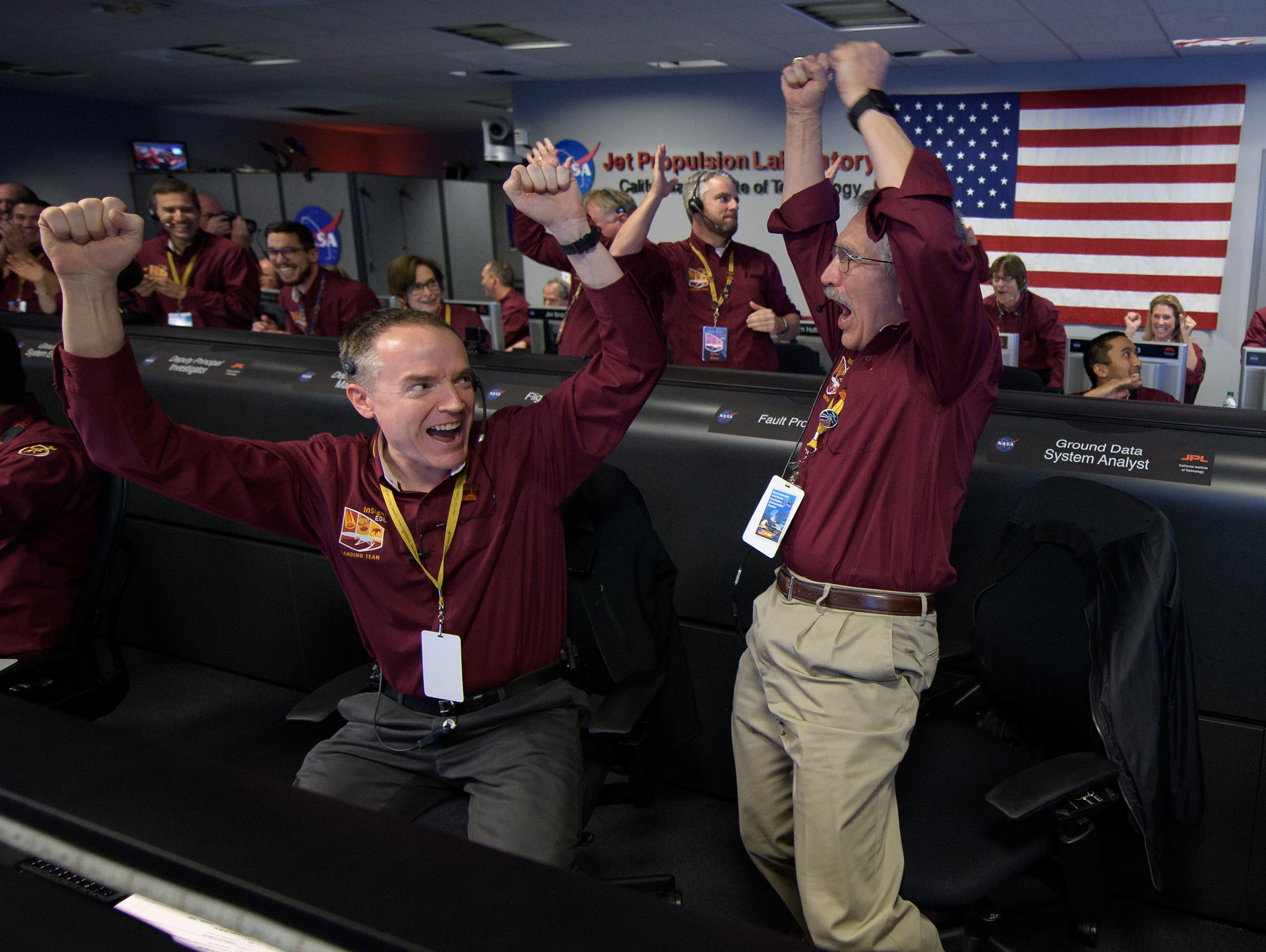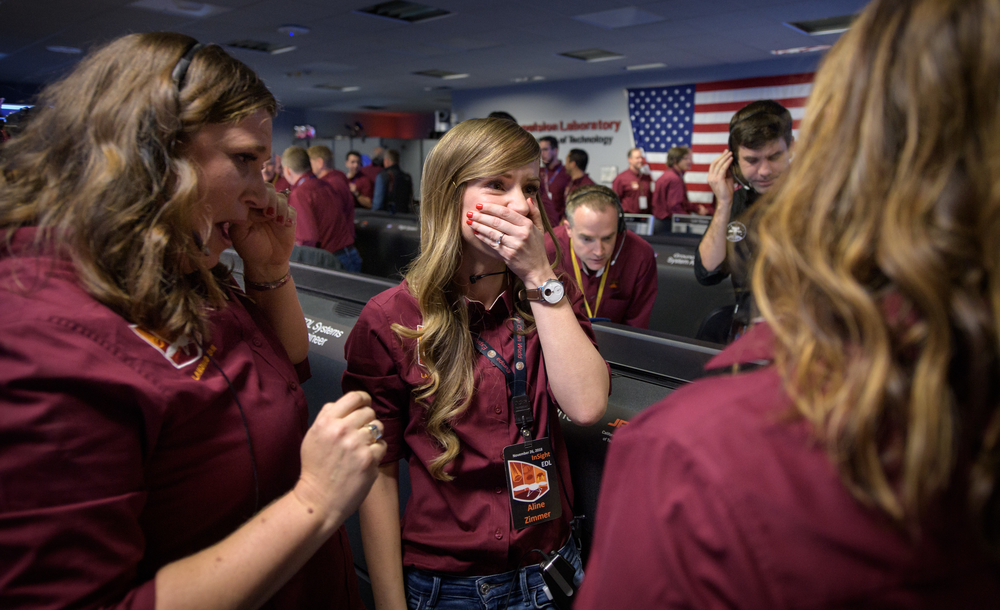Insights on NASA’s Mars InSight from Alumni on the Front Lines
-
-
slice.mit.edu
Filed Under
Recommended

When NASA’s Interior Exploration using Seismic Investigations, Geodesy and Heat Transport (InSight) lander touched down on the surface of Mars on November 26, 2018, Sanford (Sandy) Krasner ’75, SM ’76 (Krasner pictured above, jumping at right) and Julie Wertz Chen ’00, SM ’02, PhD ’06 were in the middle of the action.
As a principal software engineer at NASA’s Jet Propulsion Lab, Krasner led all communications for the entry and descent landing (EDL) team, and Chen served as the team’s systems engineer as well as the project verification and validation (V & V) lead engineer.
Both alumni sat down with Slice of MIT to share what it was like to witness InSight’s successful landing after a nearly seven-month, 300-million-mile journey from Earth.

What were your roles in the successful touchdown of the NASA’s InSight lander on Mars?
Krasner: I am the end-to-end information system engineer for InSight. I coordinate the computer systems on the instruments, both spacecraft and ground, to make sure they all talk to each other. This includes interfaces, protocols, and data formats.
For entry descent and landing, I was the communications lead. I led a team to make sure that all the information relating to EDL came in to our control center and on to our displays. We had data from radio telescopes in Green Bank, West Virginia, and Effelsberg, Germany; telemetry relayed in real time via two CubeSats, called MarCO; and telemetry recorded for later playback by the Mars Reconnaissance Orbiter (MRO). EDL communications is also the equivalent of an airliner “black box”—if InSight crashed, it is the data we would use to analyze the failure. Fortunately, of course that didn’t happen!
Chen: As the project V & V lead, I was in charge of ensuring that we had the proper test program in place and that all of our test efforts were completed before launch and landing. As an EDL systems engineer, I worked with the rest of the EDL team during development and operations to design and test the full system specifically for the several minutes from entry through touchdown. During the actual event, I was also one of the three EDL systems engineers who were interpreting the telemetry we were getting from the spacecraft to inform everyone, on the team and in the public, what was happening.
I kept thinking we could still crash.
What was going through your head in the moments before and when InSight landed?
Krasner: I was trying not to cry. I kept thinking we could still crash. As we passed each major event—the first signals, parachute deploy, lander separation for powered descent, and touchdown—I eventually felt a huge exhilaration. There was also a lot of information zooming around in the room during those final moments—the voice of EDL calling out altitude, and the radio science and MarCO operators calling out that they could see from our UHF radio signals that we had touched down. So I felt a combination of terror and thrills.
I still have a hard time believing that this is real and not data from one of the simulations that we ran.
Chen: The entire experience of being on the InSight team has definitely been a highlight of my career here at NASA’s Jet Propulsion Lab (JPL). I will never forget those tense moments or the incredible sense of joy and amazement when we got back that first picture. I still have a hard time believing that this is real and not data from one of the simulations that we ran. We have prepared and worked for this for so long that it is often hard to believe that it has actually happened and that InSight made it safely to Mars. I am in awe of the whole team and so incredibly proud to be a part of it.
How do you think your common MIT backgrounds contributed to this major NASA success?
Chen: I certainly believe that MIT gave me an incredibly strong background in aerospace systems engineering that I have called upon throughout my career here at JPL. I loved my time at MIT, and one of the things that I love about JPL is that the people and the culture often remind me of MIT.
Krasner: I think MIT gave us the ability to see the entire system and how all the pieces fit together. It also gave us the experience of working in teams with many talented people, so that we can bring all of our skills together.
In addition to his work at NASA, Sandy Krasner ’75, SM ’76 recruits and interviews student applicants to MIT as an MIT Educational Counselor. Learn more about this volunteer opportunity.







